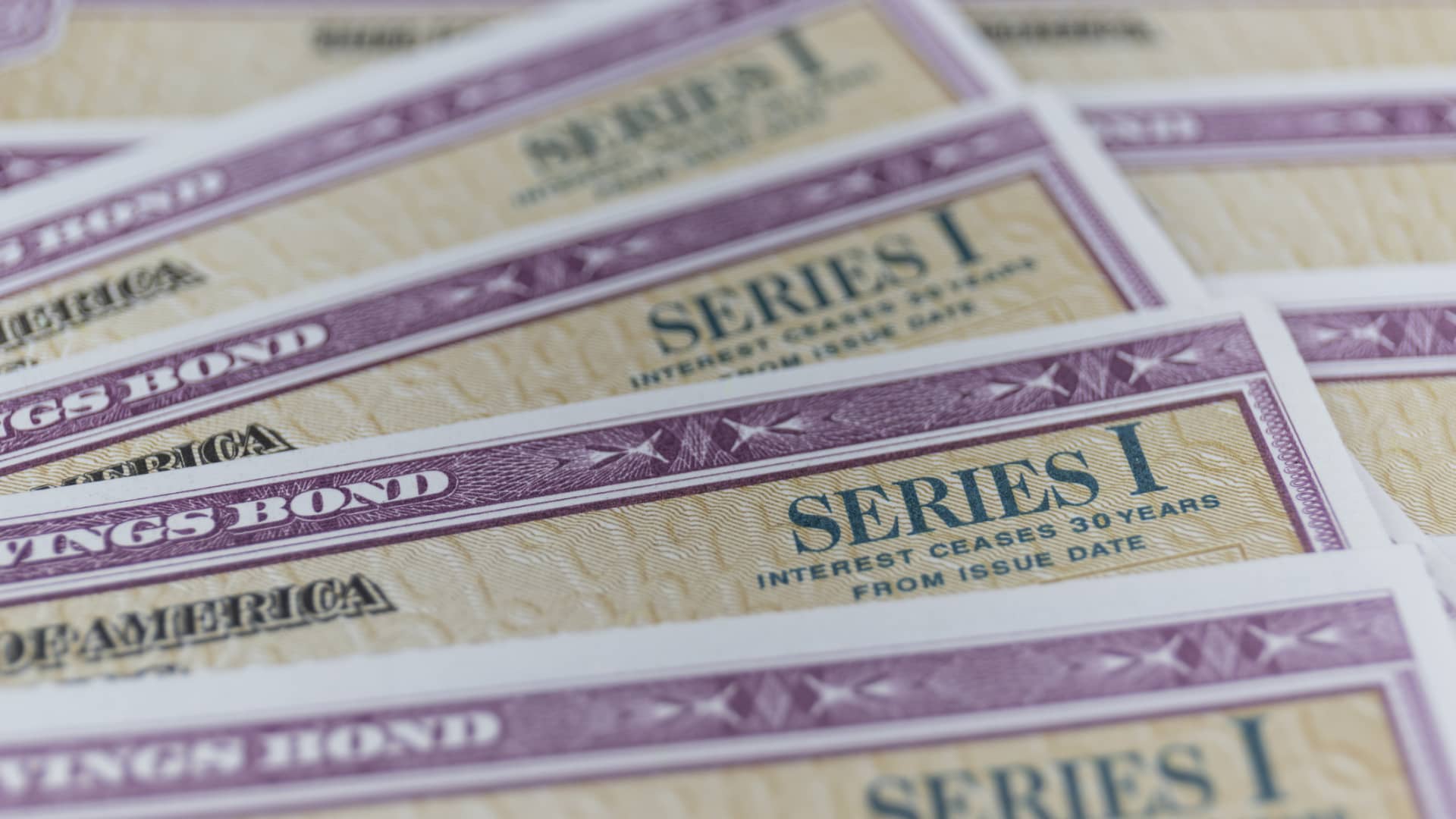Products You May Like
The U.S. Department of the Treasury on Tuesday announced Series I bonds will pay 6.89% annual interest through April 2023, down from the 9.62% yearly rate offered since May.
It’s the third-highest rate since I bonds were introduced in 1998, and investors may lock in this rate for six months by purchasing anytime before the end of April.
“The rate of 6.89% is another very competitive rate for the I bond compared to other conservative alternatives,” said Ken Tumin, founder and editor of DepositAccounts.com, which tracks I bonds, among other assets.
More from Personal Finance:
Here’s what the inverted yield curve means for your portfolio
Demand for Series I bonds crashes TreasuryDirect ahead of key deadline to secure 9.62% rate
TreasuryDirect sold more than $27 billion in Series I bonds since Nov. 1. Now it’s getting a makeover
You can purchase the assets online through TreasuryDirect, limited to $10,000 per calendar year for individuals. You can also use your federal tax refund to buy an extra $5,000 in paper I bonds.
On Oct. 28, TreasuryDirect crashed as investors rushed to meet the deadline to lock in the 9.62% annual rate for six months. A department spokesperson said the traffic put “significant pressure and strain on the 20-year-old TreasuryDirect application.”
Despite technical issues, TreasuryDirect sold a record $979 million of I bonds on Oct. 28, nearly as much in a single day as were sold in three years from 2018 to 2020.
How I bond rates are calculated
Backed by the U.S. government, I bonds don’t lose value and earn monthly interest with two parts: a fixed rate, which may change every six months for new purchases but stays the same after buying, and a variable rate, which changes every six months based on inflation.
TreasuryDirect announces new rates every May and November.
You can estimate the new variable portion of the rate based on the previous six months’ consumer price index data, which measures inflation.
The Department does not disclose how it determines the fixed portion of the rate, but experts think factors including demand and the yield from Treasury inflation-protected securities influence it. For example, a higher TIPS yield could play into a decision to increase the fixed portion of the rate for an I bond.
While the consumer price index was still relatively high in September, the I bond rate drop reflects a downward trend over the past six months.
Early estimates for the I bond rate were 6.48% based on the inflation figures. However, the new rate includes an increase to 0.4% for the fixed portion of the rate, factoring in higher TIPS yields, Tumin said. The previous fixed portion of the rate was zero.
What the rate change means for older I bonds
If you bought I bonds before the latest rate announcement, the timing of when your rate changes and what it changes to will depend on when your bonds were issued.
For example, if you bought I bonds during September in any given year, your rates will reset each year on March 1 and September 1, according to the Treasury. Bought in June? Look for changes every December 1 and June 1.
The headline rate may be different than what you receive, considering that the fixed rate remains set for the life of your bond.
Someone who bought an I bond in September 2004, for example, has 1% for the fixed portion of their rate. Their composite rate reset to 10.67% in September, and will change to 7.51% at their next reset in March 2023, according to Treasury data.
The downsides of I bonds
While the current I bond rate may be attractive, experts point to several downsides. And some of them are potentially costly.
One of the trade-offs is you can’t touch the money for at least one year. There’s a three-month interest penalty if you cash in the I bond within five years of it being issued.
Another drawback is lower future returns, explained certified financial planner Christopher Flis, founder of Resilient Asset Management in Memphis, Tennessee.
Depending on future inflation, the variable portion of I bond interest may adjust down again in May. Aiming for 2% inflation, “the Federal Reserve is not going to rest until that number comes down,” he said.
And as interest rates increase, the difference in yields between I bonds and other government-backed assets, such as the 2-year Treasury, is getting smaller. “The relative attractiveness of these assets is dwindling,” Flis said.
Even with excess money after covering other financial priorities — no credit card debt, an emergency fund and your 401(k) match — Flis wouldn’t pick I bonds as the next option.
“Long-term investors, specifically younger ones, should really be looking to the stock market for the backbone of their portfolio,” he said. “Certainly not I bonds.”
Frequently asked I bond questions
1. What’s the current interest rate? 6.89% annually
2. How long will I receive 6.89%? Six months after purchase
3. What’s the deadline to get 6.89% interest? Bonds must be issued by April 30, 2023. The purchase deadline may be earlier
4. What are the purchase limits? $10,000 per person every calendar year, plus an extra $5,000 in paper I bonds via your federal tax refund
5. Will I owe income taxes? You’ll have to pay federal income taxes on interest earned, but no state or local tax
